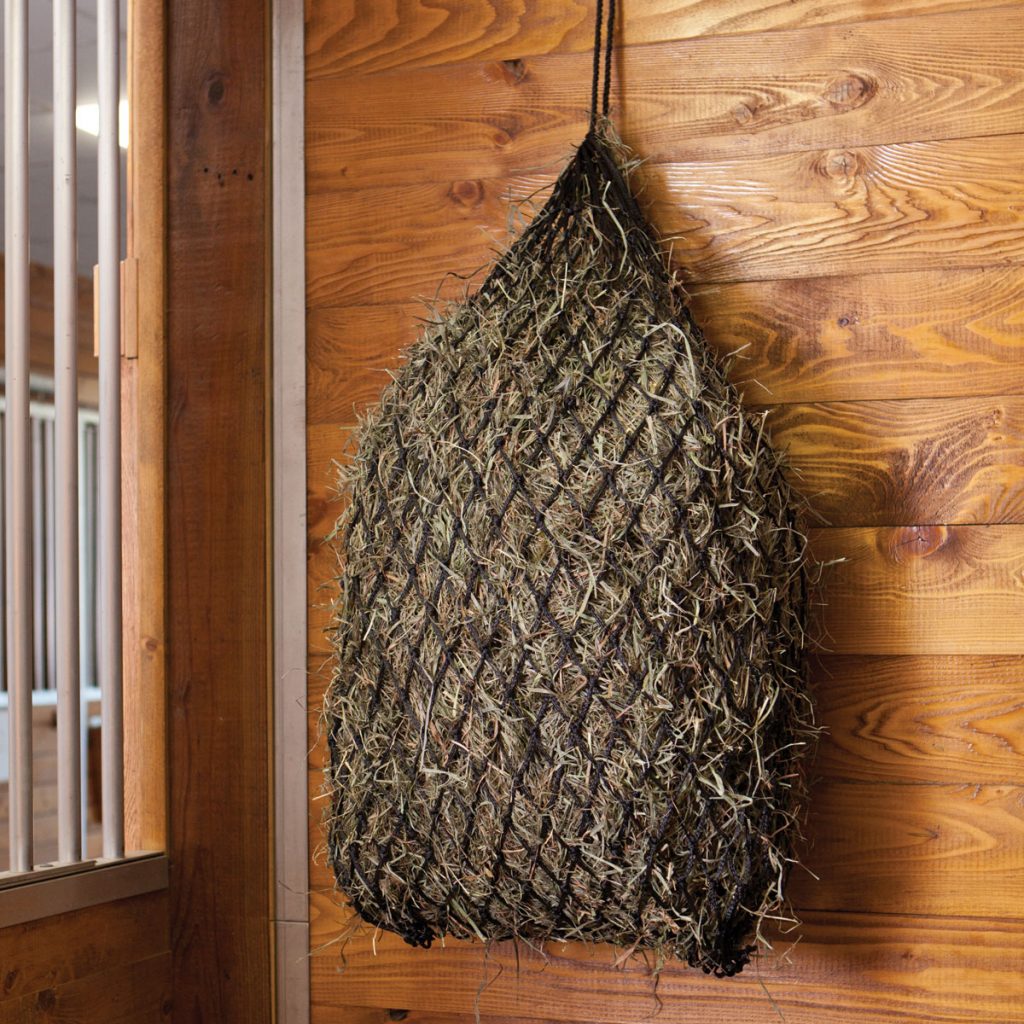Slow feeders are all the hay-feeding rage these days . . . and for good reason. Because of their design (and as the name indicates), they slow down a horse’s hay consumption rate and mimic natural foraging behavior, better supporting digestive health.
In the wild, horses spend 16-20 hours grazing on sparse vegetation, but domesticated horses are often fed around their owner’s schedule, getting two larger meals per day. Because horses tend to eat quickly, this often leaves them with nothing until the next meal comes. Other horses have access to round bales—which isn’t necessarily a bad thing—but may lead to overeating as well as wasted hay and money.

Though slow feeders may be more expensive than traditional hay nets or feeders, they can save time and money in the long run. Plus, there are many benefits for horses. Here are a few:
- Because they require a horse to work a little harder at getting hay, slow feeders promote mental stimulation and reduce boredom;
- Slow feeders allow horses to eat with their head down which is more in line with their natural physiology. Eating this way also increases chew time and saliva production, leading to a decreased risk of ulcers and colic;
- For overweight horses, slow feeders can help regulate insulin spikes, metabolism, and cortisol levels;
- When several slow feeders are strategically placed around the pasture, horses will naturally move between them and get more exercise throughout the day.
You can find a variety of slow feeders available on the market, including nets, bags, and box-type feeders. Slow feed nets and bags have mesh openings while the box-type slow feeders typically use metal or plastic grates for the openings. Slow feeders also come in a variety of sizes—from those that fit just a few flakes, to others which hold an entire square bale, or even those which can fit an entire round bale!
You may need to test out several types of slow feeders to find one that best suits your horse’s needs. The key is to find one that slows down your horse’s consumption rate but doesn’t lead to frustration. Usually, 1.5-1.75 inch openings work best for normal-sized horses. Just keep in mind that if the holes are too large, the feeder won’t serve its intended purpose.
If you already use slow feeders, feel free to let us know how they work in the comments below!
**
Casie Bazay is a freelance and young adult writer, as well as an owner/barefoot trimmer and certified equine acupressure practitioner. She hosts the blog, The Naturally Healthy Horse, where she regularly shares information on barefoot, equine nutrition, and holistic horse health. Once an avid barrel racer, Casie now enjoys just giving back to the horses who have given her so much. Follow Casie at www.casiebazay.com.



